If visiting Salamanca hasn’t been on your plans until now, I think this blog post will convince you to visit Salamanca! Located in the Spanish region of Castile and Leon, the historic centre of Salamanca was declared a UNESCO World Heritage Site in 1988.
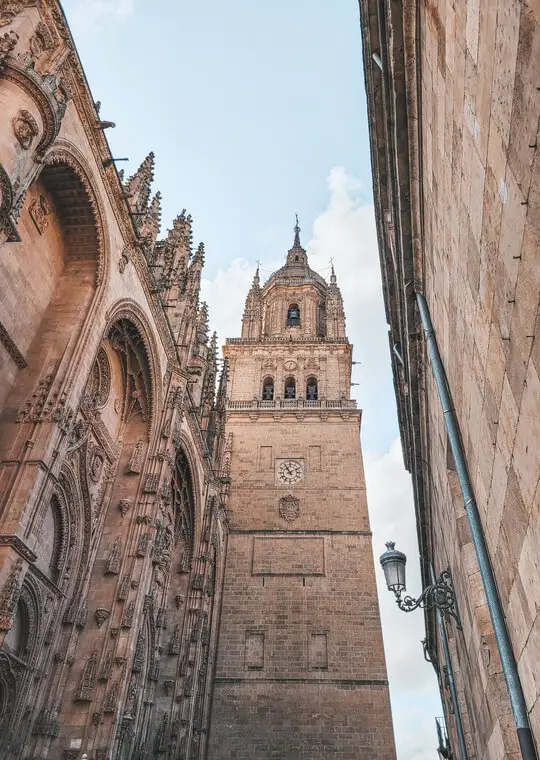
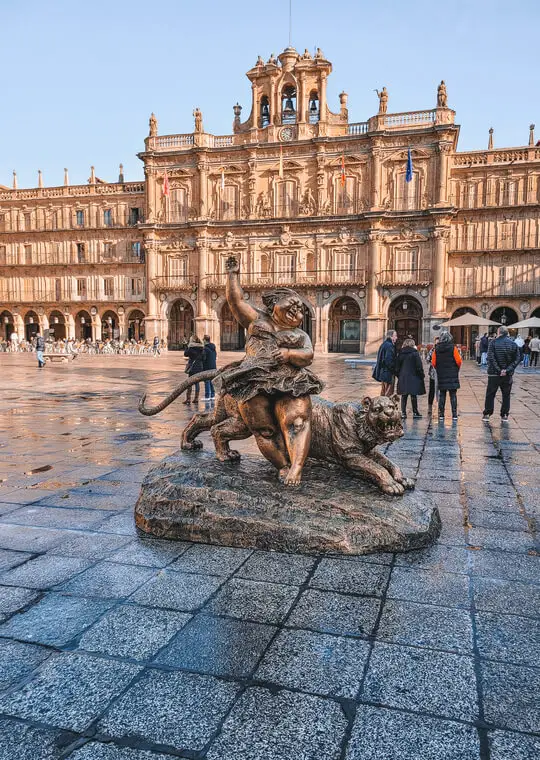
Salamanca is known for its liveliness, as it is one of the oldest student cities in the world. Founded in 1218, the University of Salamanca is certainly a must-see when visiting this city.

In addition, Salamanca is also a popular stop for those walking the Way of St. James (Camino de Santiago). So, keep reading to find out what you can visit in Salamanca 😊
What is the best time of year to visit Salamanca?
In terms of weather, late spring and early summer are the best time to visit Salamanca. Although the climate is predominantly dry, winters are very cold (it can even snow) and summers are hot.
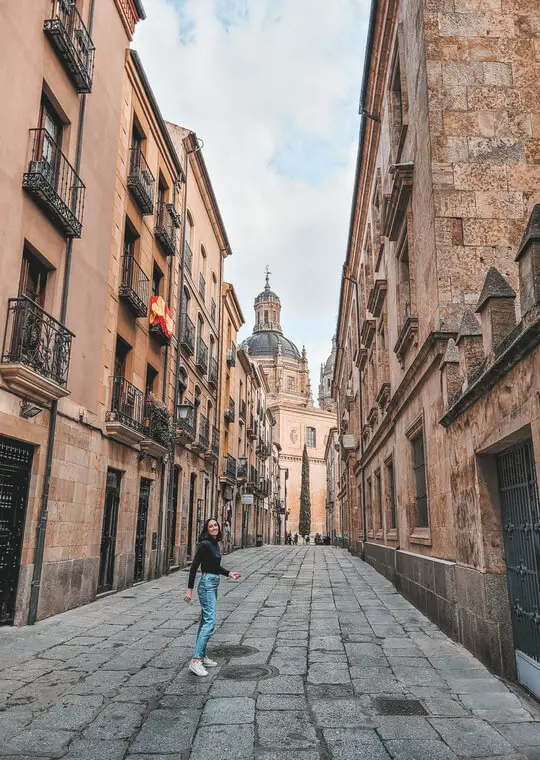
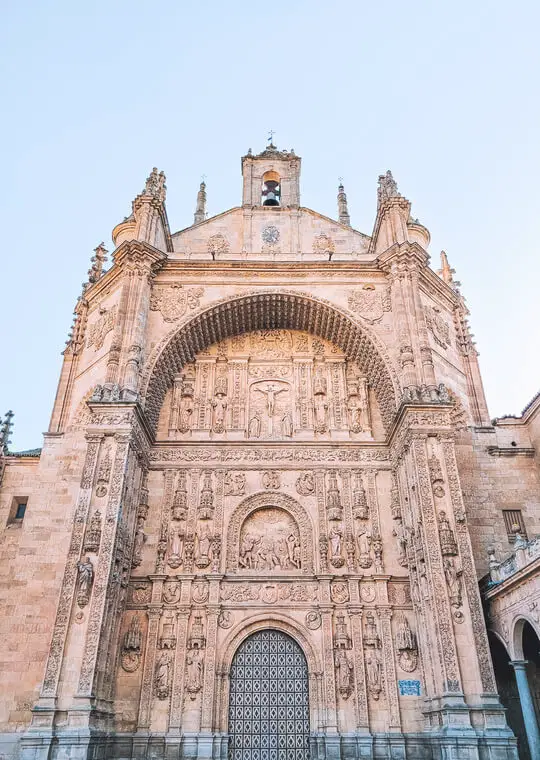
However, don’t let the temperatures stop you from getting to know this beautiful city. Some of Salamanca’s most popular festivities and, consequently, more crowded periods, include:
- Santa Águeda Festivities (February)
- Holy Week (March/April)
- San Juan de Sahagún Festivities (June)
- Virgen de la Vega Festivities (September)
How many days do you need to visit Salamanca?
Salamanca has so much history that a single day in the city isn’t enough. Therefore, I suggest you spend at least 2 days in the city – the perfect weekend getaway 🥰
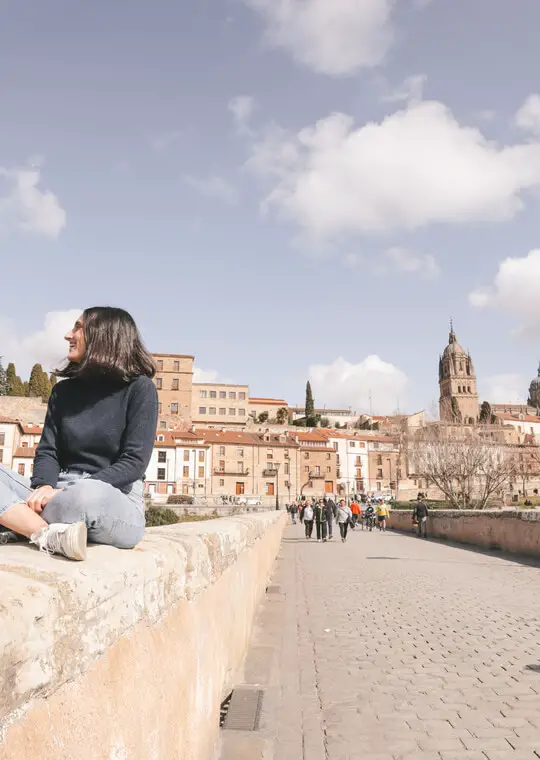
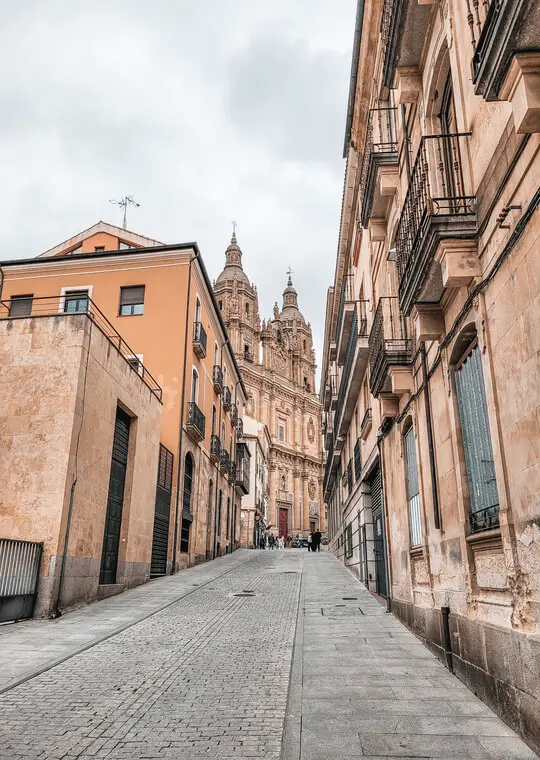
How to get to Salamanca?
Although Salamanca has an airport, it is quite small and only has direct flights to/from Spain. So, and for those who do not intend to drive to Salamanca, the simplest option to reach the city is to fly to Madrid. From Madrid, there are a few options to get to Salamanca, such as:
- Bus (2h30 trip): Avanza Grupo, ALSA
- Train (2h50 trip): RENFE
The bus option is likely to be more practical as there are options departing directly from the airport, while the train departs from the centre of Madrid.
Accommodation in Salamanca
I only stayed one night in Salamanca, so I chose a simple accommodation. I chose the Hotel Alevia – a very basic choice, but perfectly fine to spend the night. The location was extremely central and located on a pedestrian street.

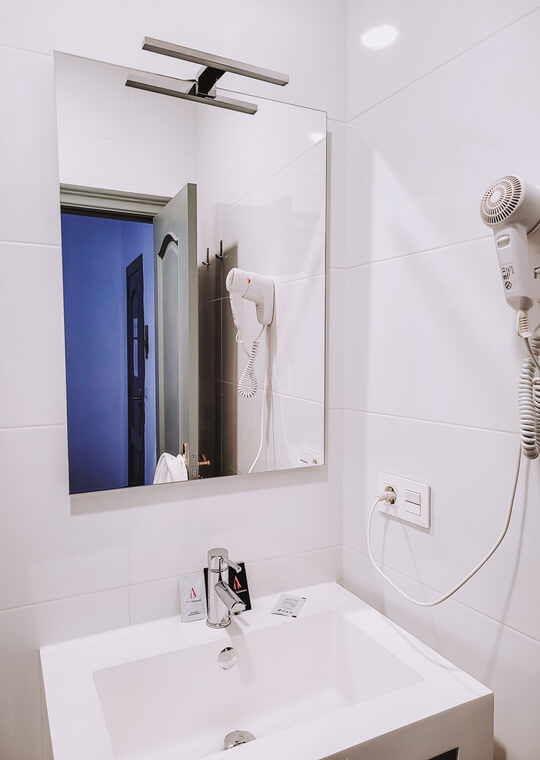
Access to the building and rooms was via an App, and we had no contact with staff at the accommodation.

However, there are several accommodation options in Salamanca. Here are a few:
- Hospedium Plaza Mayor Salamanca: A more affordable option for those who prefer to stay in the city centre. The hostel has been completely renovated recently and it includes breakfast service.
- Salamanca Suites Libertad: A few meters from Plaza Mayor, these modern flats have everything you need for a perfect stay (some even have a kitchen and/or patio) at very affordable prices.
- Hospes Palacio de San Esteban: Located in the historic centre of Salamanca, this accommodation is for those seeking a more refined experience, as the hotel is housed in a former convent. The price is higher, but the hotel has a magnificent outdoor space and pool.
- Apartamentos Boutique Salamanca: Just 100 metres from Plaza Mayor, these flats have a clean but cosy decor and many even have a balcony with city views.
Activities & tours in Salamanca
💼 TRAVEL INSURANCE: Unexpected events happen anywhere in the world, so I always recommend getting travel insurance. I regularly use Heymondo, which offers some of the highest coverages on the market at very competitive prices. As well as covering medical expenses, Heymondo’s insurance also covers the loss or theft of luggage, electronic equipment and more. They also have a 24/7 customer service through their App. As A Ticket to Take Off reader, you get a 5% discount when purchasing Heymondo insurance. The purchase must be made using this link, and the price shown on the website already includes the discount.
What to visit in Salamanca?
Before we start the itinerary with what to visit in Salamanca, I’ll share with you a map with the list of the main points of interest in the city.
What to visit in Salamanca – Day 1
» San Benito Square
We start this itinerary by a lesser known place in Salamanca – San Benito Square. In this square, we can find a church with the same name (San Benito church), located where in the 12th century there was a Romanesque church.
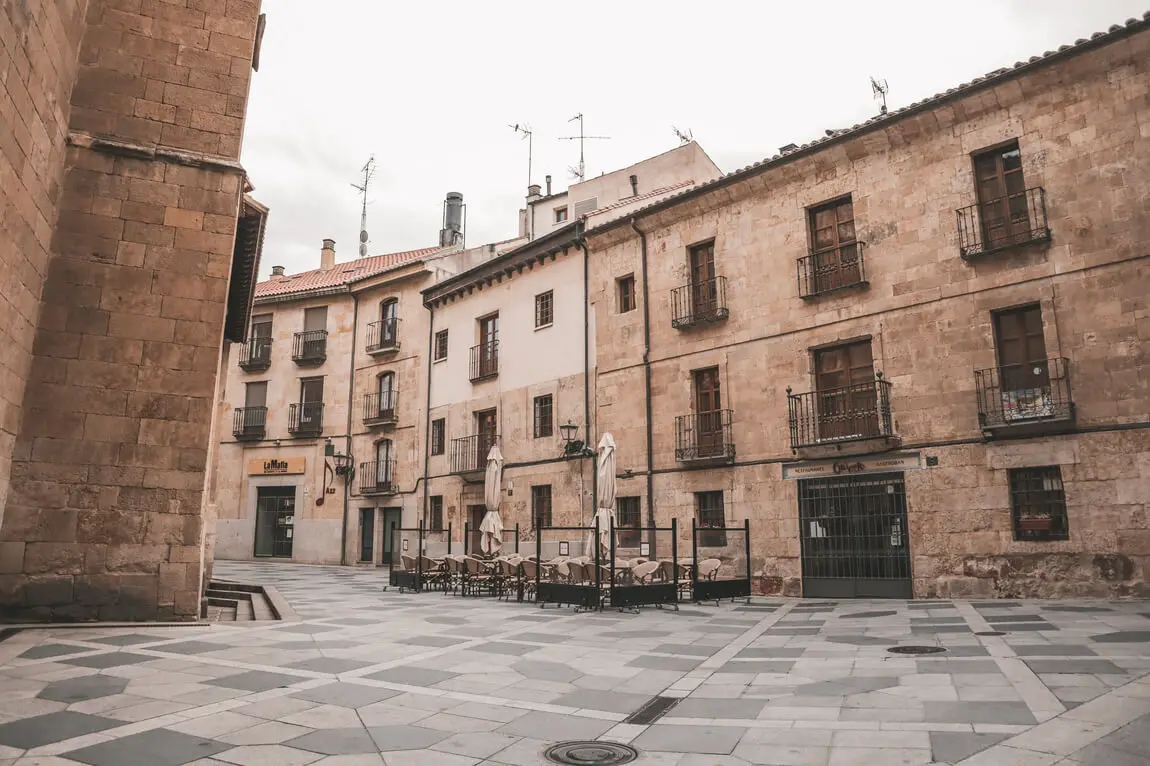
» La Clerecía
La Clerecía is in fact the former Royal College of the Holy Spirit of the Society of Jesus. It dates back to the 17th century and consists of a church and schools that were used by the Jesuits at the time. Currently, the building houses the Pontifical University.
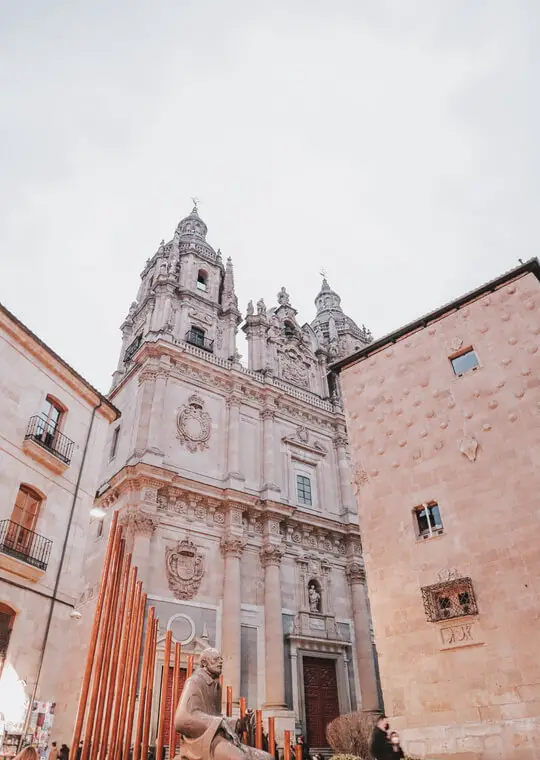
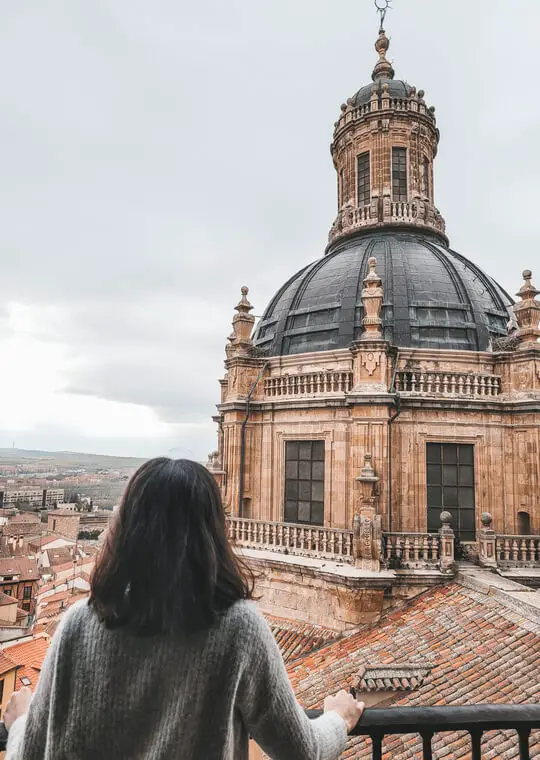
An incredible experience and totally recommended is going up to the towers of La Clerecía. From here we have absolutely incredible views of the city of Salamanca 🥰
📝 USEFUL INFORMATION: Access to the towers is available every day from 10 am to 8 pm from March to November and until 6 pm the rest of the year. The ticket costs 3.75€ but is free on Tuesdays from 10 am to 12 pm. Find all the most up-to-date information here.
» Casa de Las Conchas (House of Shells)
Right next to La Clerecía, the unique façade of Casa de Las Conchas (House of Shells) immediately stands out. Gothic in style and built in the 15th century, the more than 300 shells catch our eye immediately.

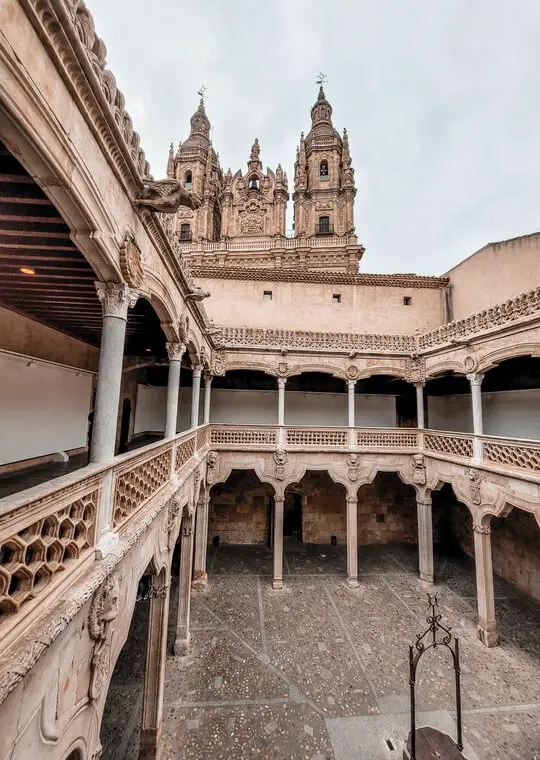
The building of Casa de las Conchas currently houses the Public Library of Salamanca, and it is possible to visit its interior courtyard free of charge.
📝 USEFUL INFORMATION: The inner courtyard is open Monday to Friday from 9 am to 9 pm, Saturday from 9 am to 2 pm and 4 pm to 7 pm and Sunday from 10 am to 2 pm and 4 pm to 7 pm.
» University of Salamanca
The University of Salamanca is one of the oldest in the world, so as strange as it may seem to visit a University, the truth is that this is one of the main points of interest in the city!


One of the main points of interest regarding Salamanca’s University is its Plateresca door in Libreros Street, featuring incredible details. Don’t be surprised if you find several tourists with their heads up in the air. They are probably trying to find on the façade the famous frog on top of a skull – one of the most well-known symbols of this façade.
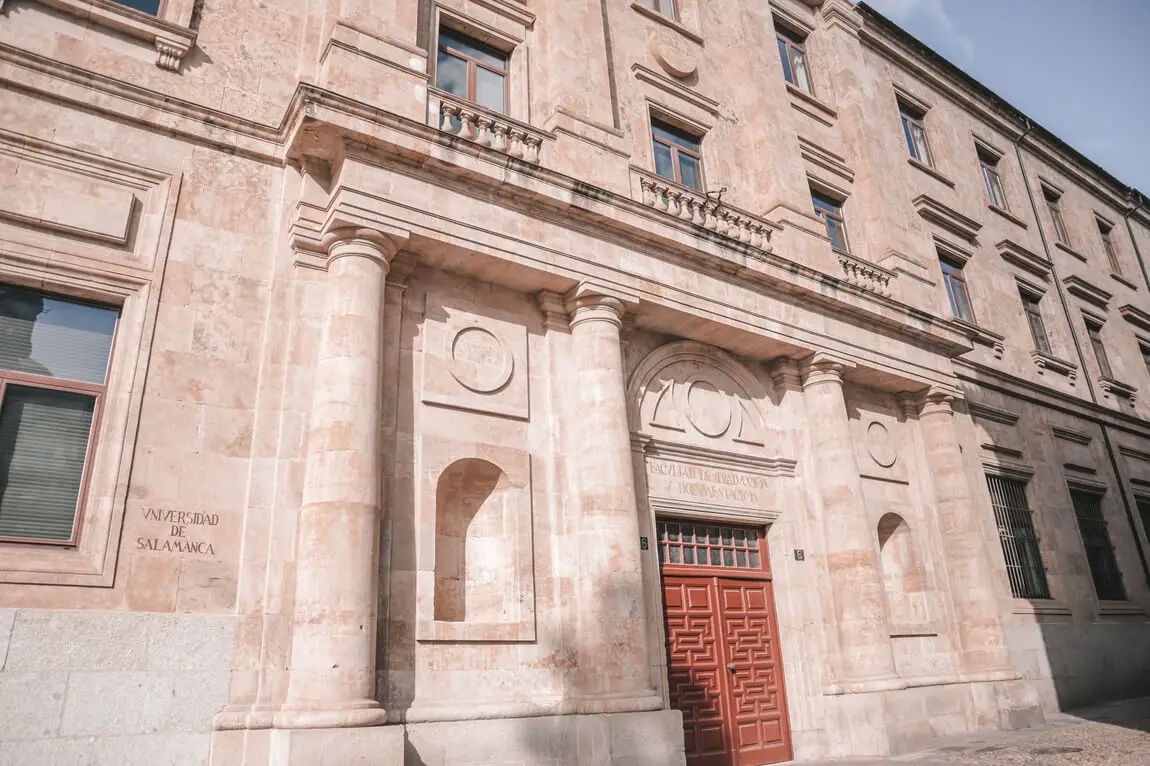
Next to the door, we find the famous Patio de Escuelas (courtyard). You can also visit the inside of the University (which is divided into Escuelas Mayores and Escuelas Menores). Inside, the patio, the San Jerónimo chapel, the Staircase of Knowledge and the famous Library stand out in particular. In the Escuelas Menores you can also visit the Museum of Salamanca, where you can admire the famous Cielo de Salamanca – a mural with astrological motifs.
📝 USEFUL INFORMATION: The visit to the inside of the University of Salamanca costs 10€ and has the following opening hours: from 16/Out to 31/Mar, Monday to Saturday from 10 am to 7 pm; from 1/Apr to 15/Out, Monday to Saturday from 10 am to 8 pm. On Sundays, it is only open from 10 am to 2 pm. You can check out the most up-to-date information here.
» Old and New Cathedral
We then head for one of Salamanca’s ex-libris: the city’s cathedrals! The entrance is located in the beautiful Anaya Square. The two cathedrals are joined together, one having been built between the 12th and 13th century (Old Cathedral) and the most recent (New Cathedral) in the 16th century.

Already inside the building, we easily noticed the change of architectural style when we leave the New Cathedral and enter the Old Cathedral. Although stripped of exuberant elements, the Old Cathedral ended up winning me over 😊
💡 EXTRA TIP: It is also possible to climb to the top of the Cathedral towers if you visit the Ieronimus Museum. It is open from 10 am to 8 pm from March to December and until 6 pm in the other months. The ticket costs 4€. It is undoubtedly an unforgettable experience: in addition to learning more about the history of the towers, you can enjoy enviable views of the city 🥰

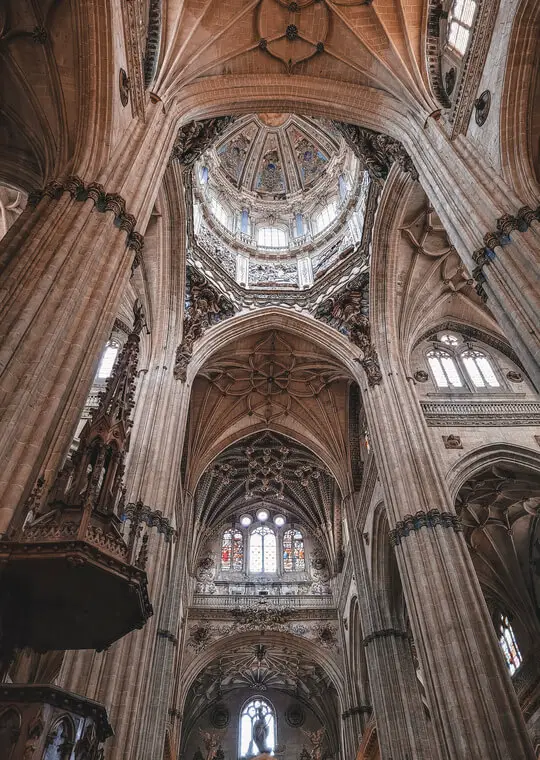
And it is not only the Plateresca Door of the University of Salamanca that hides some peculiar details. The New Cathedral itself has a façade that leaves many tourists intrigued looking for some figures like the astronaut or the lion with its ice cream.
📝 USEFUL INFORMATION: The entrance ticket to both Cathedrals costs 6€ (includes audio guide) and can be purchased in advance online. In terms of timetables, from Monday to Saturday the cathedrals are open from 10 am to 8 pm and on Sunday from 10 am to 6 pm. However, you can check the most up-to-date timetables here.
» Casa Lis: Art Nouveau and Art Déco Museum
This point of interest is less touristy and only for those with interest in this type of monument. Located in a former palace, Casa Lis is currently an Art Nouveau and Art Déco museum, with exhibitions of decorative art from the 19th century to World War II.
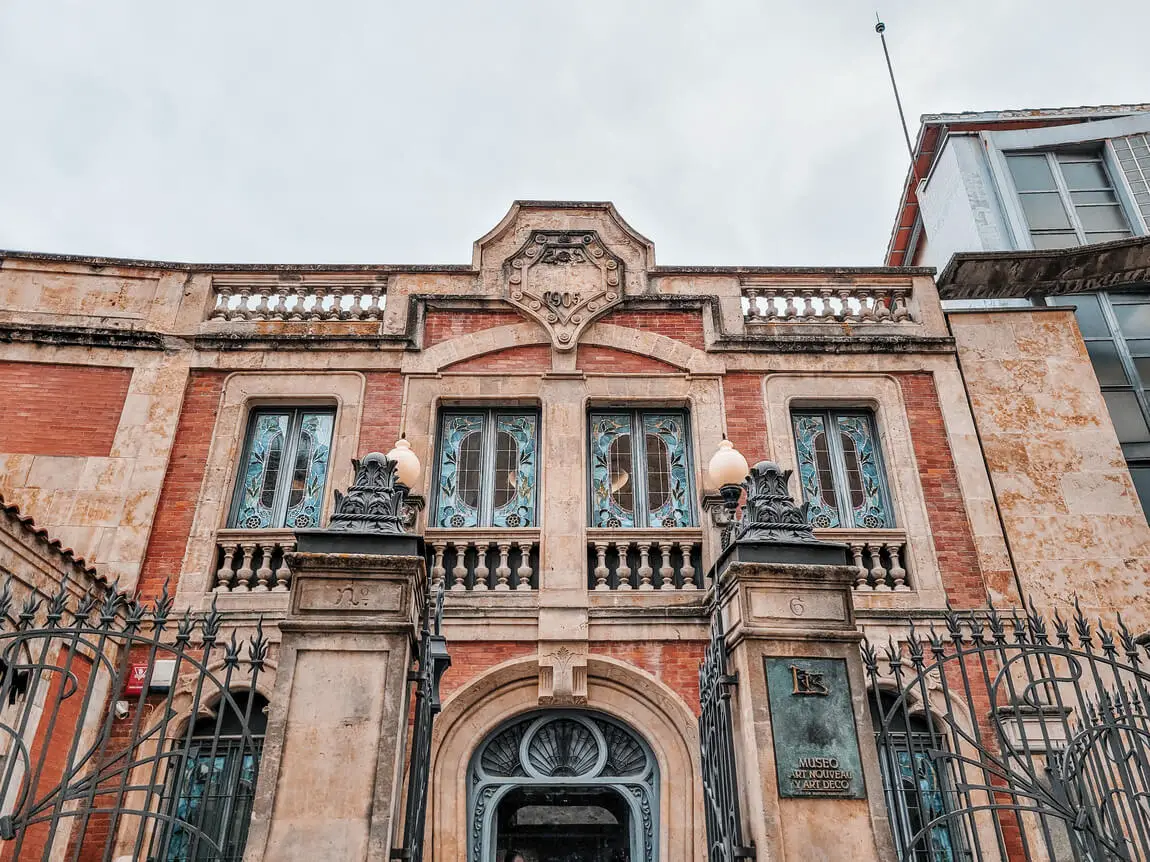
Apart from the art exhibitions, one of the most popular parts of this building are the beautiful interiors with stained glass windows.
📝 USEFUL INFORMATION: The entrance ticket to Casa Lis costs 5€, and on Thursdays admission is free from 11 am to 2 pm. For timetables, it is best to consult the most up-to-date version here.
» Huerto de Calixto y Melibea
Next is a visit to one of Salamanca’s most emblematic gardens – Huerto de Calixto y Melibea. It is a small garden where locals sometimes hang out.
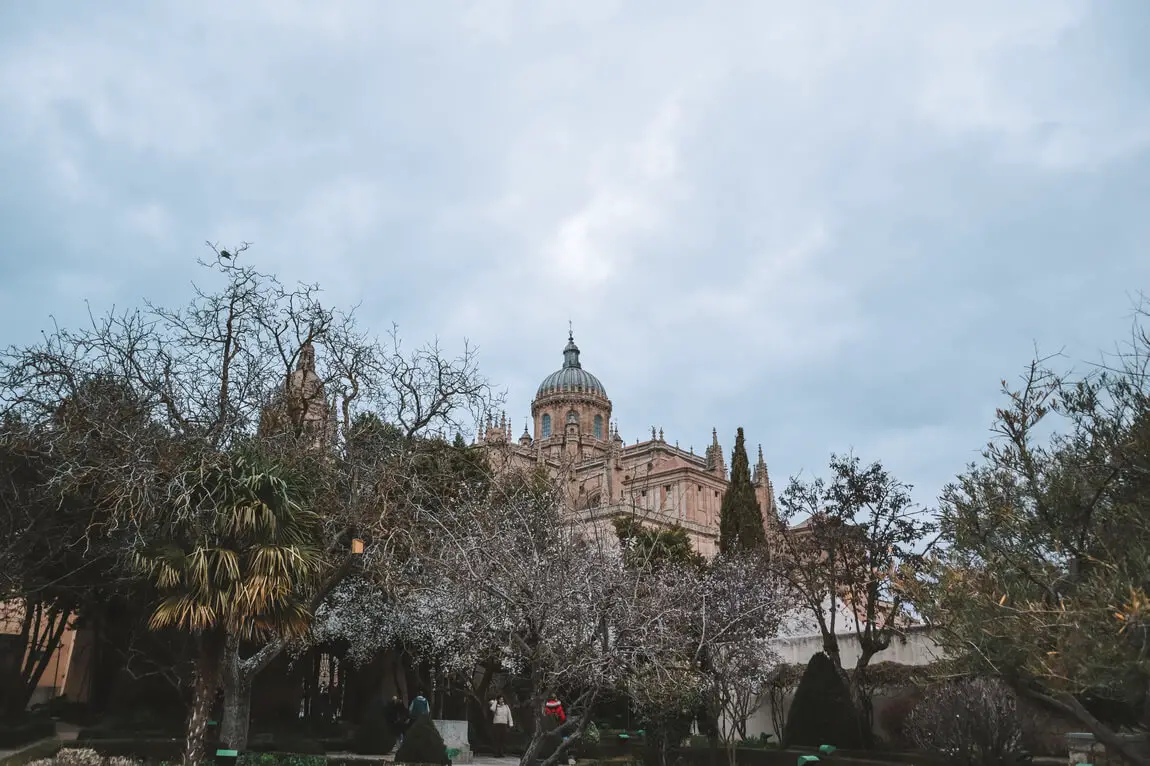
Opened in 1981, this is the ideal place to rest for a while before moving on to the last point of this first day in Salamanca.
» Roman Bridge
And we finish our first day in Salamanca in a place that offers us some of the best views of the city. This bridge connects the two banks of the river Tormes and is currently pedestrian only.
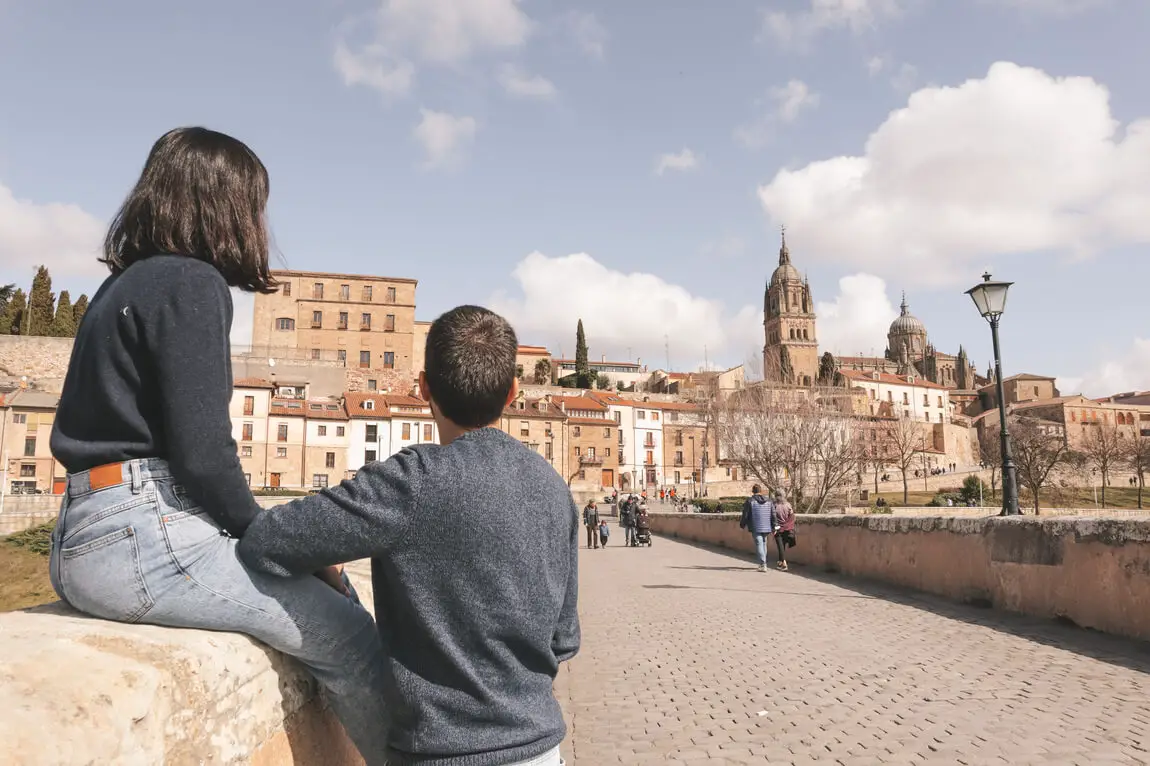
The visit, especially at sunset is truly magical with the city of Salamanca as a backdrop 😊
What to visit in Salamanca – Day 2
» Plaza Mayor
A visit to Salamanca wouldn’t be complete without a quick visit to the most important square in the city – Plaza Mayor. The square is one of the main meeting points for locals and has always been that way. It was here that bull races, processions and even some executions were held.
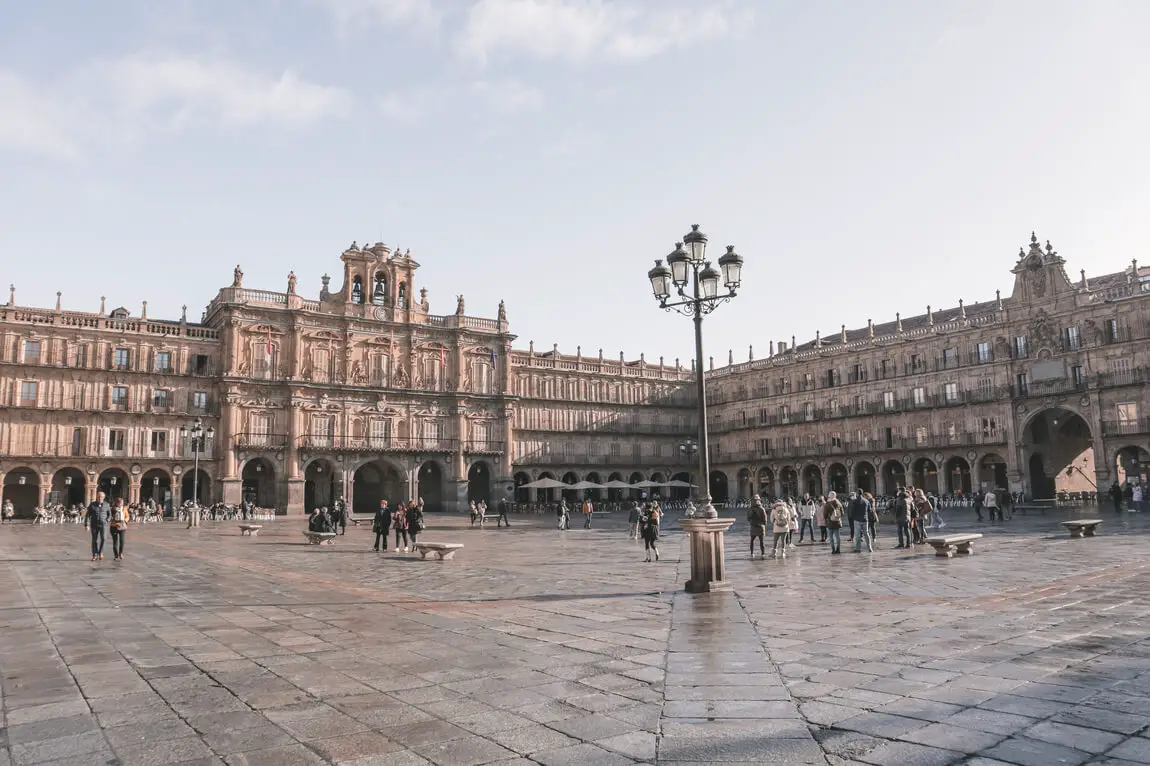
Take the opportunity to visit the interior of the 88 arches that make up the Plaza Mayor, to look at the various medallions with Spanish historical figures or even to contemplate the Town Hall.
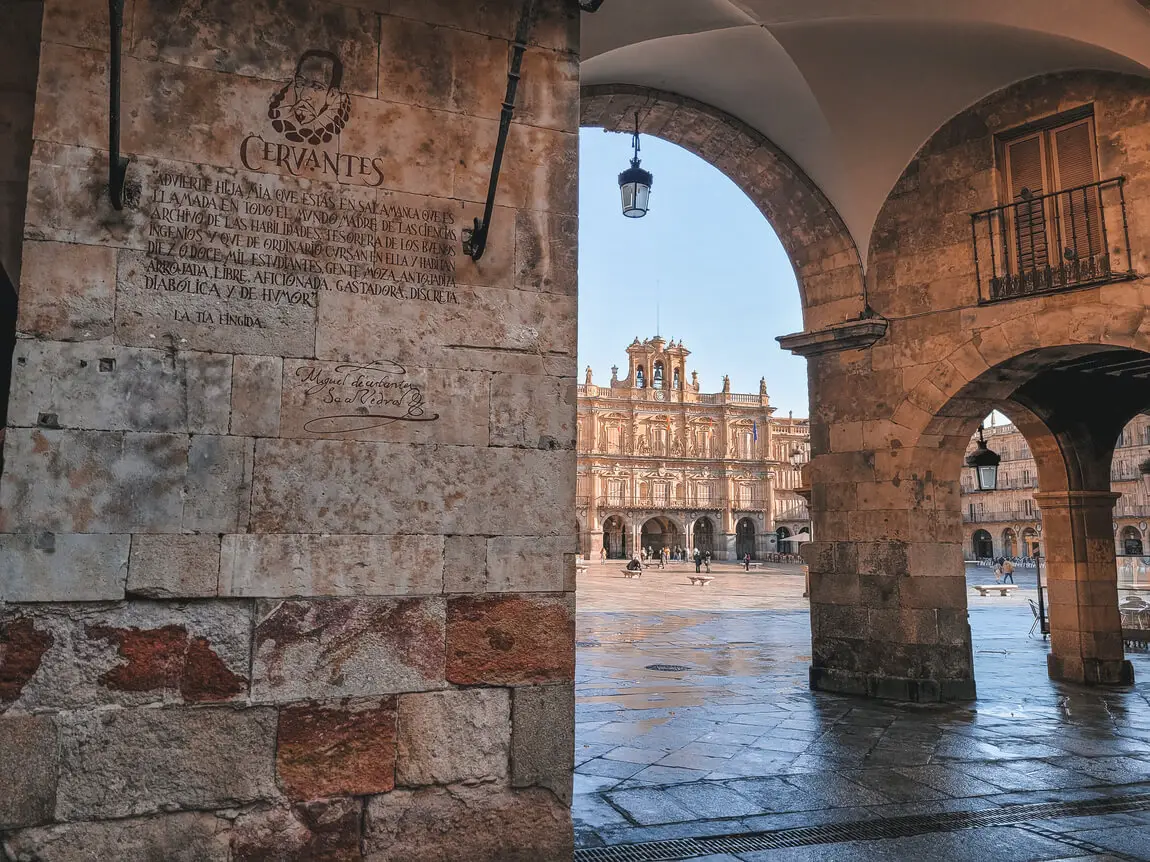
» Salamanca’s Central Market
Then walk towards Salamanca’s Central Market: a market where many locals do their shopping for fresh produce.
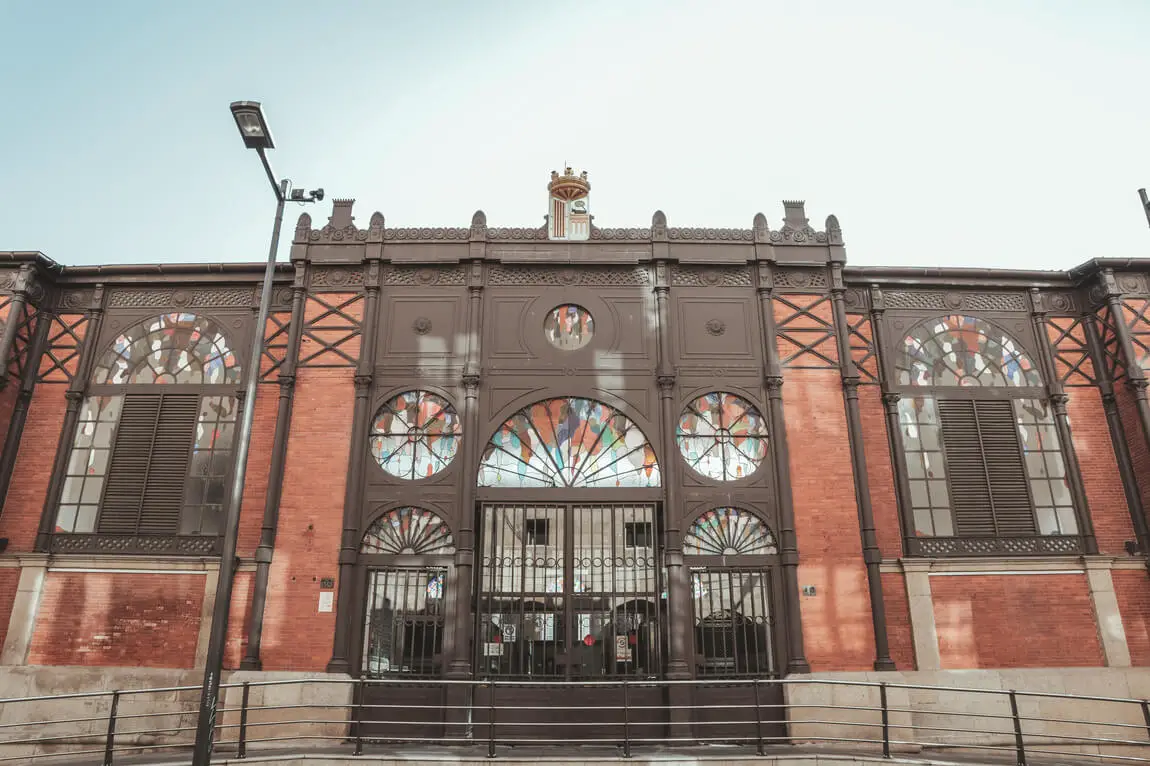
📝 USEFUL INFORMATION: Salamanca’s Central Market is open Monday to Saturday from 8 am to 2 pm and Monday from 4 pm to 7 pm and also Tuesday to Friday from 4 pm to 8 pm.
» San Martín de Tours Church
Although it is not one of Salamanca’s main tourist attractions, it is relatively central so you can take a short diversion to the Church of San Martín de Tours. This is a Romanesque church next to El Corrillo Square, built over an ancient hermitage.
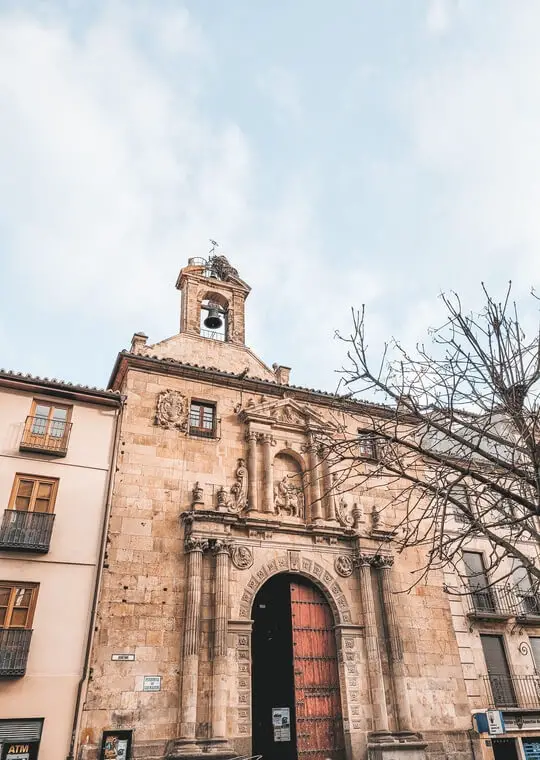

» Colón Square
The itinerary through Salamanca moves on to Colón Square. The square itself is just an ordinary square with a central garden where some locals spend their free time.

However, it is the buildings in this square that make me include it in this itinerary. The buildings include:
- La Salina Palace (Renaissance palace where it is possible to visit the courtyard)
- Orellana Palace (classicist palace)
- Clavero Tower (manor house)
- Anaya Tower (manor house)
- San Pablo Church
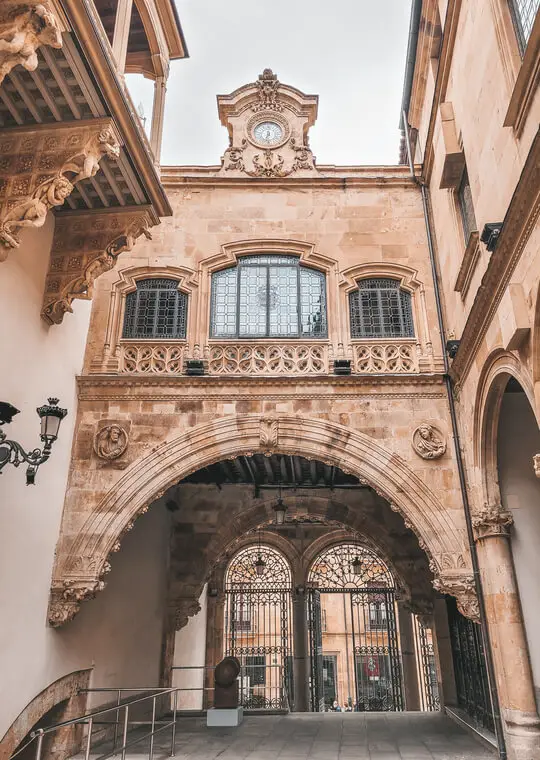
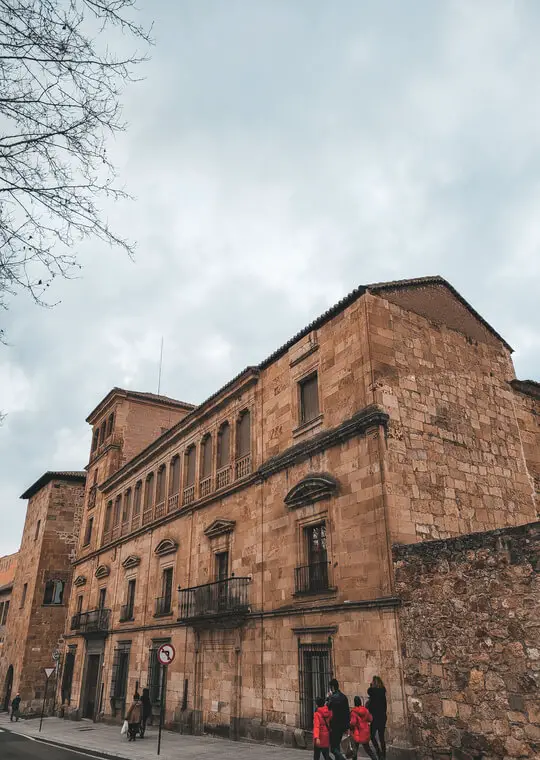
I chose only to visit the inner courtyard of La Salina Palace, since the visit is free and it was the one I found most interesting. You can check the opening times here.
» Las Dueñas Convent
Another place to visit in Salamanca is Las Dueñas Convent. This Dominican convent was founded in 1419 and its construction took advantage of an old palace of Arabic origin, of which some doors are still preserved.
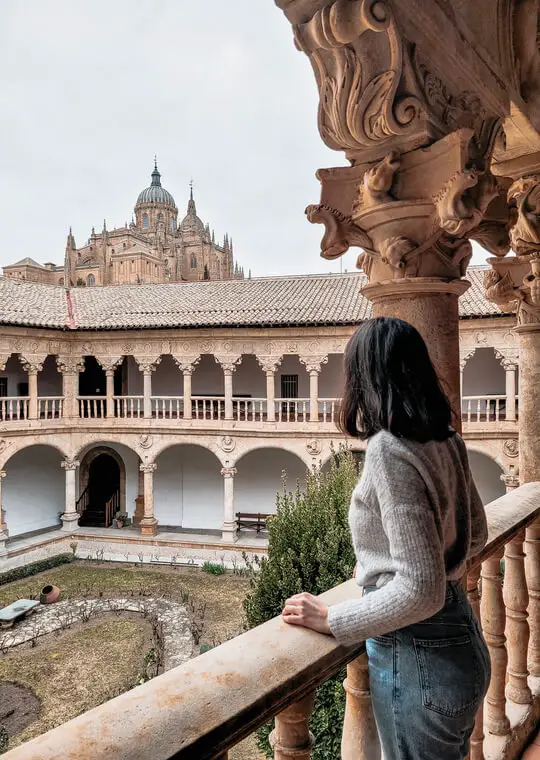
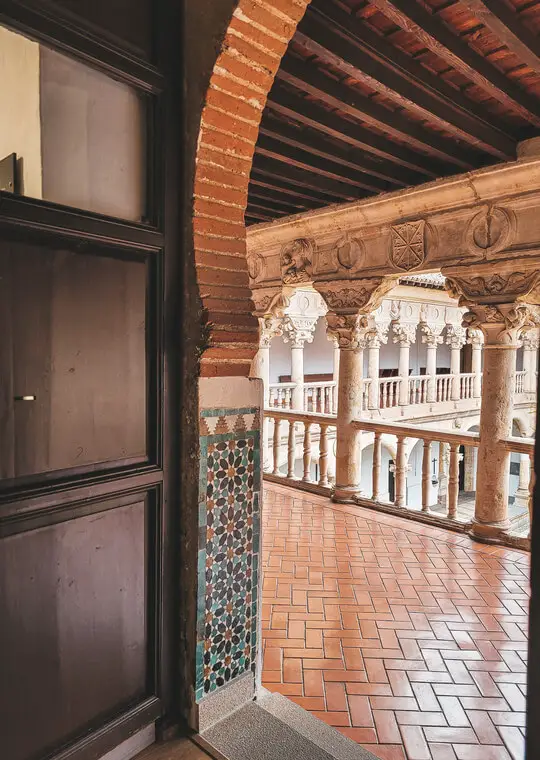
The cloister is, without a doubt, the highlight of the visit 😊 However, it is also possible to buy some conventual sweets produced in the convent.
📝 USEFUL INFORMATION: The entrance ticket has a symbolic price of 2€ and the convent is open from Monday to Saturday (10.30 am – 12.45 pm or 4.30 pm – 7.30 pm).
» San Esteban Convent
We head for yet another convent – the Convent of San Esteban, much more imposing than the previous one. Built between the 16th and 17th centuries, the exterior façade of this monument leaves no one indifferent. There are so many details that it’s impossible to observe them all!

But if you have a little more time, visit its interior. The highlights of the visit are the San Esteban Church, the Rosary Chapel, the Soto Staircase and the Cloister. It is also possible to visit the Museum, located in the former Library of the Convent.
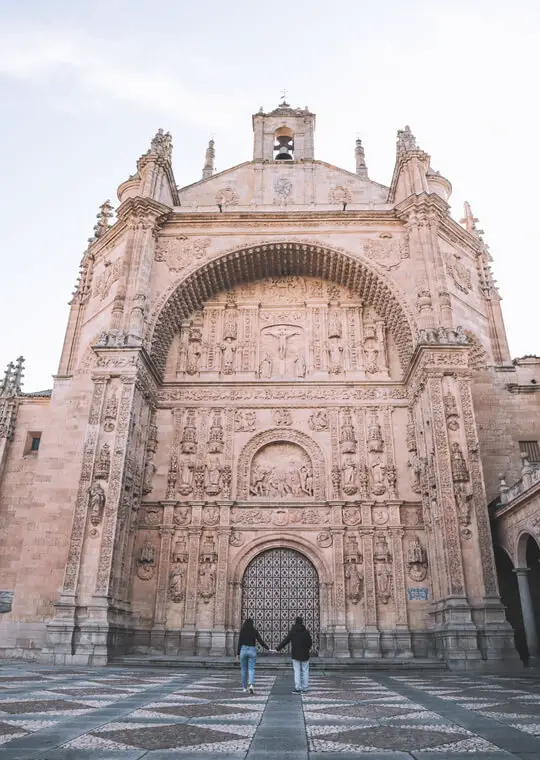
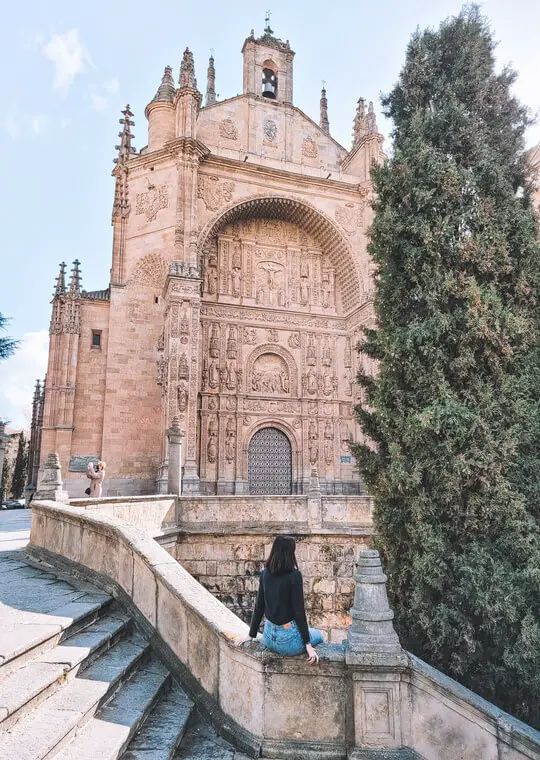
📝 USEFUL INFORMATION: You can consult the most up-to-date version of the opening times here. The entrance ticket costs 4€.
» Enrique Esteban Bridge
And to end the itinerary in the best possible way, I suggest a visit to the Enrique Esteban bridge. As well as views over the Roman Bridge and the Tormes river, I suggest you cross over to the other bank of the river. I promise this will be the image you want to keep when you remember Salamanca!
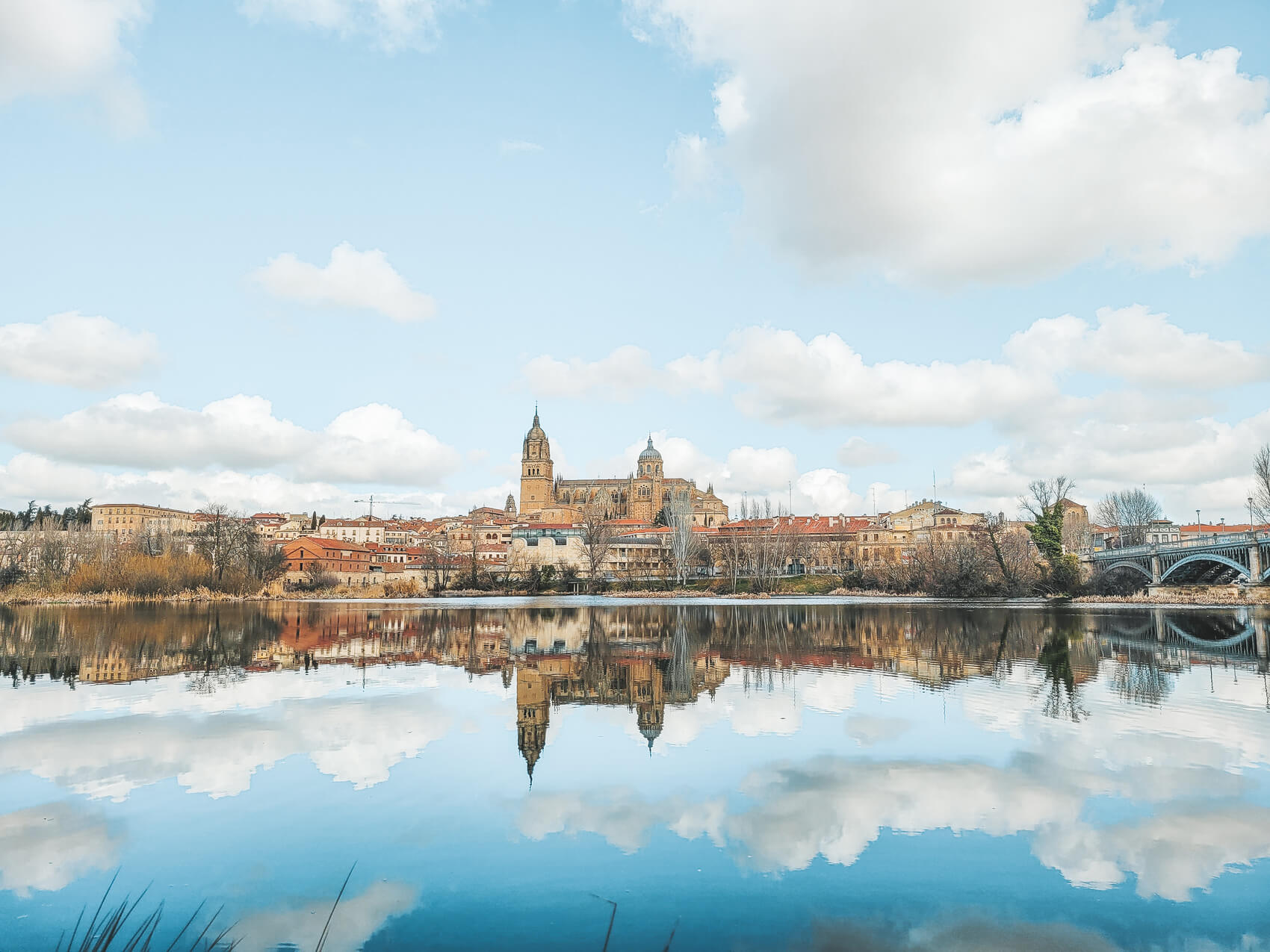
Restaurants in Salamanca
Unfortunately my gastronomic experience in Salamanca was not the most pleasant. The truth is that you don’t always get it right and I don’t have any restaurant recommendation for you. However, I would like to mention some of Salamanca’s traditional dishes:
- Hornazo: a kind of meat pie with sausages and boiled eggs.
- Patatas Revolconas: mashed potatoes seasoned with sweet pepper and served with cracklings
- Chanfaina: the main ingredients of this dish include lamb and its blood, rice, peppers, among others
- Jamón de Guijuelo: one of Spain’s most prestigious hams
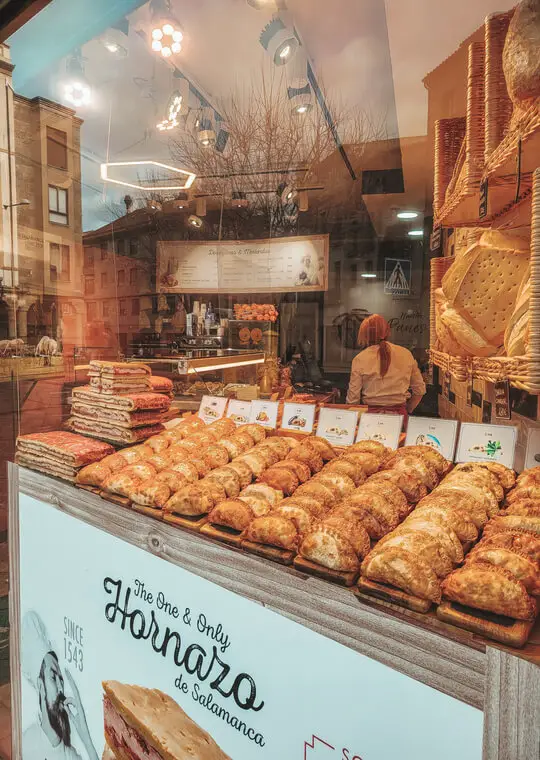
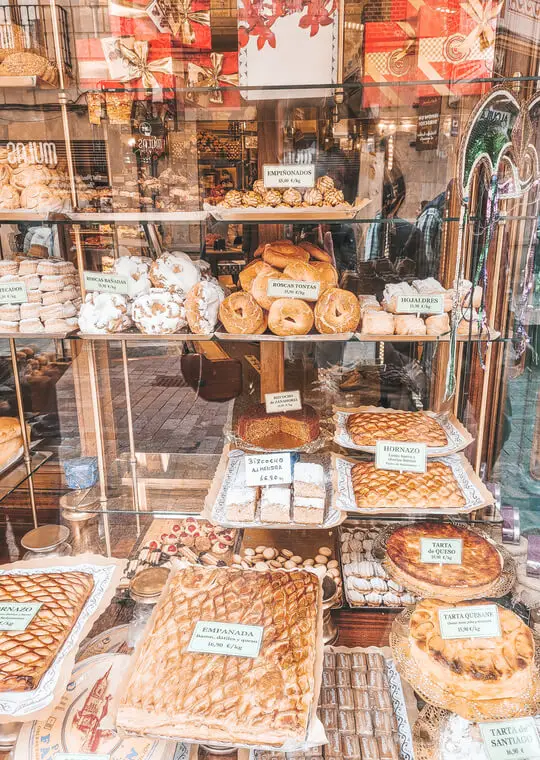
Disclaimer: this post may contain some affiliate links, which means I get a small commission if you buy something through my links. This doesn’t represent any additional cost to you and you’ll be supporting my work here on the blog😊

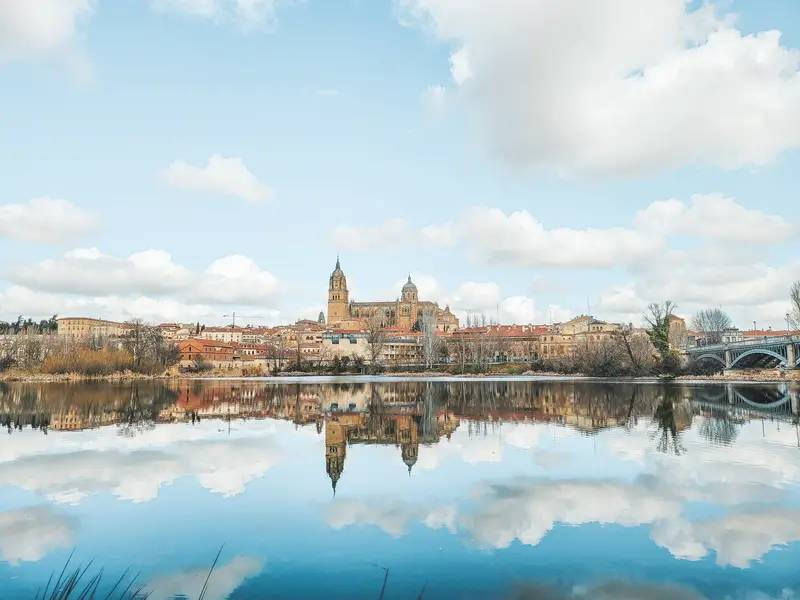
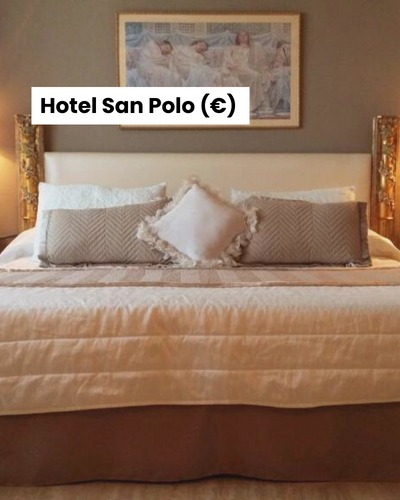

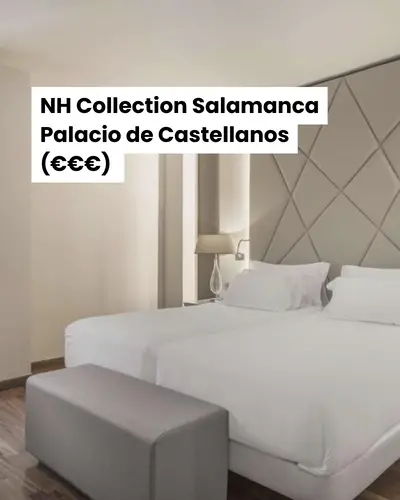





Hi, I am doing a photograph project in Salamanca in May. Would you please tell me the location and time (e.g morning/sunset time) for the photo of Enrique Esteban Bridge (a nice reflection of city) that you took? As I only spend 2 days in Salamanca for the project, I’d like to have a better planning for different shots : ). Thank you.